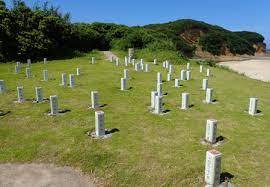Your gateway to endless inspiration
Site - Blog Posts




Sean bienvenidos, japonistasarqueológicos, a una nueva entrega de arqueología nipona, una vez dicho esto pónganse cómodos qué empezamos. - En esta ocasión vamos a hablar, de cómo se deformaba el cráneo de forma antropogénica en el sitio arqueológico de Hirota en Tanegashima, localizado en la prefectura de Kagoshima. El yacimiento data del periodo yayoi 400 al 250 d.c - La deformación craneal ya se daba en muchas culturas de América, con motivos religiosos y sociales y posiblemente aquí podremos hallar el mismo caso similar o parecido, al ser un hallazgo reciente todavía faltan muchos estudios para ello. ¿Qué opinan ustedes al respecto? ¿Conocían este lugar? - En el caso de las culturas Americanas, le ponían cuerdas para alargar el cráneo¿Practicaban las mismas actividades? Quien sabe lo que nos depara el futuro, esta publicación está hecha con intenciones científica-divulgativa para transmitir conocimiento al mundo. - Espero que os guste y nos vemos en próximas publicaciones, que pasen una buena semana.
-
Welcome, Japanese archaeologists, to a new installment of Japanese archaeology, having said that, make yourself comfortable and let's start.
-
On this occasion we are going to talk about how the skull was deformed in an anthropogenic way in the archaeological site of Hirota in Tanegashima, located in the Kagoshima prefecture. The site dates from the Yayoi period 400 to 250 AD
-
Cranial deformation already occurred in many cultures in America, for religious and social reasons and possibly here we can find the same or similar case, as it is a recent finding, many studies are still missing for it. What do you think about it? Did you know this place? - In the case of American cultures, they used ropes to lengthen the skull. Did they practice the same activities? Who knows what the future holds for us, this publication is made with scientific-informative intentions to transmit knowledge to the world. - I hope you like it and see you in future publications, have a good week.Welcome, Japanese archaeologists, to a new installment of Japanese archaeology, having said that, make yourself comfortable and let's start.
-
On this occasion we are going to talk about how the skull was deformed in an anthropogenic way in the archaeological site of Hirota in Tanegashima, located in the Kagoshima prefecture. The site dates from the Yayoi period 400 to 250 AD
-
Cranial deformation already occurred in many cultures in America, for religious and social reasons and possibly here we can find the same or similar case, as it is a recent finding, many studies are still missing for it. What do you think about it? Did you know this place?
-
In the case of American cultures, they used ropes to lengthen the skull. Did they practice the same activities? Who knows what the future holds for us, this publication is made with scientific-informative intentions to transmit knowledge to the world. - I hope you like it and see you in future publications, have a good week.
-
日本の考古学者の皆さん、日本の考古学の新しい記事へようこそ。そうは言っても、気を楽にして始めましょう。
-
今回は、鹿児島県種子島の広田遺跡で、人為的に頭蓋骨がどのように変形されたのかについてお話します。この遺跡は、弥生時代、西暦 400 年から 250 年に遡ります。 頭蓋骨の変形は、宗教的および社会的理由により、アメリカの多くの文化ですでに発生しており、おそらくここでも同じまたは類似の症例が見つかる可能性があります。これは最近の発見であるため、多くの研究がまだ不足しています。あなたはそれについてどう思いますか?この場所を知っていましたか? - アメリカ文化の場合、頭蓋骨を伸ばすためにロープを使用していましたが、同じ活動を行っていたのでしょうか?私たちの将来がどうなるかは誰にもわかりませんが、この出版物は、知識を世界に伝えるという科学的有益な意図を持って作成されています。
-
気に入っていただければ幸いです。今後の出版物でお会いできることを願っています。良い一週間をお過ごしください

Easy Strawberry Cupcakes - Desserts Strawberries and a bit of food coloring give these cupcakes a delightful red hue. Top with cream cheese frosting and blueberries for the perfect 4th of July treat.

Salad - Muffuletta-Inspired Cauliflower Salad Cauliflower, olives, and pimento peppers mingle in this muffuletta-inspired salad that's a refreshing make-ahead option for a picnic.